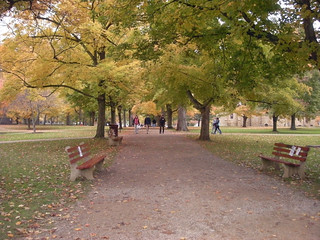I was thinking about contemplation
How it keeps your learning raw
I was thinking about my father
Who I all too rarely saw
But most of all
I was thinking about the Jack of Hearts
(If Alan Levine introduces me to his recent houseguest, maybe we’ll finish the other 14 verses.)
My father was an engineer with the Nuclear Regulatory Commission. He travelled a lot for work, out to New Mexico a lot, sometimes to Europe, and many times to Taiwan. As those trips got longer, my dad got tired of having to lug multiple Tom Clancy and Len Deighton books around to keep himself occupied on the plane. And so he started operating by a reading-time-to-weight ratio, looking for the books which could keep him occupied the longest in the fewest number of pages. And so he started reading St. John of the Cross, Thomas Merton, and Irish poets. (Airport bookstores would look different if we had more liberally-educated engineers running around.)
I’ve told this story a million times, but I don’t know that I really understood it until I flew to ELI, and 12 pages captivated me from Columbus to Houston.
 We’re hosting a reading club on contemplative and reflective pedagogies at my center this semester, starting with Mary Rose O’Reilley’s Radical Presence: Teaching as Contemplative Practice. I was out of town while the group met to discuss Chapter 2, but I didn’t want to get behind. So I leaned against the cold airplane wall, and read. And opened my notebook, and reread. And took a moment to contemplate the grandmotherly honey-smell of a plastic cup of bourbon, and reread again.
We’re hosting a reading club on contemplative and reflective pedagogies at my center this semester, starting with Mary Rose O’Reilley’s Radical Presence: Teaching as Contemplative Practice. I was out of town while the group met to discuss Chapter 2, but I didn’t want to get behind. So I leaned against the cold airplane wall, and read. And opened my notebook, and reread. And took a moment to contemplate the grandmotherly honey-smell of a plastic cup of bourbon, and reread again.
I am fascinated by the way Chapter 2 lays out a productive tension in the idea of contemplative practices in teaching. On the one hand a practice, by definition, is a behavior you do. If it’s not enacted regularly, then it can’t be a practice… it’s a worldview or a belief or a goal or something. And Chapter 2 is full of behaviors to try – starting classes with silence, observing silence after reading a text, various writing exercises, leaving time for gratitude and review at the end of class. But then O’Reilly closes by asking us not to just appropriate her Buddhist-Quaker-Catholic spirituality by introducing some fashionable faux-Zen! (And echoes Parker Palmer’s warnings against technique in the introduction.) I’ve read a fair number of books on teaching, and I can’t remember seeing another one which said “don’t take my advice!”, or more accurately, “this is not advice which you can just take.”
I hear a lot of people looking for these practices through a non-spiritual framework. They’re hoping that a moment of silence will help students learn the skill of focus, that reflection will be metacognitively useful. And honestly, I believe they’ll find that to be true, but they will be on a different road than O’Reilly describes. Not necessarily a better or worse road, just a different one. Maybe the road they’re ready to be on at that time.
(I went back and looked again at Palmer’s introduction, to find that he’s not so much telling us to avoid “technique” as to avoid using it to protect our hearts. I find myself wondering how often listening to experts about “what works” also provides a convenient outlet to avoid listening to ourselves and our communities about “what’s needed.”)
O’Reilley frames this as a fundamental difference between spirituality and pedagogy. She says that spiritual “practice teaches us what we seek to know and reveals what each one needs to learn about the nature of spirit.” (She collapses time more than a bit here, as anyone who has suffered a long night of the soul – or even a short one – will tell you.) She frames pedagogy, however, as just a matter of technique, a utilitarian decision to do what works.
In matters of technique, we know that practice does not, of itself, make perfect. If you diligently practice a flawed skill, you’ll only make it harder to unlearn. Nor is perfect technique sufficient. It is not only flawlessly executing the steps which makes a great dance partner, but also the awareness of the space and the music and the partner and the other dancers. I suspect that’s the connecting point between this discussion of practice/technique and O’Reilley’s other big theme in this chapter, hospitality. If it’s the teacher’s job to create the hospitable space where learning happens, then the teacher has to be prepared to react to the students’ needs, even if that means changing things. Though one wonders what O’Reilley would think about a course where the students rebel against a contemplative approach… what does attentive hospitality look like if your guests don’t accept it?
“Round Playing Card Jack Of Hearts” photo by Leon Reynolds, CC-BY-NC-SA at https://flic.kr/p/cHpU3j
The cover of Radical Presence was designed by Jenny Jensen Greanleaf. Image taken from Amazon.




